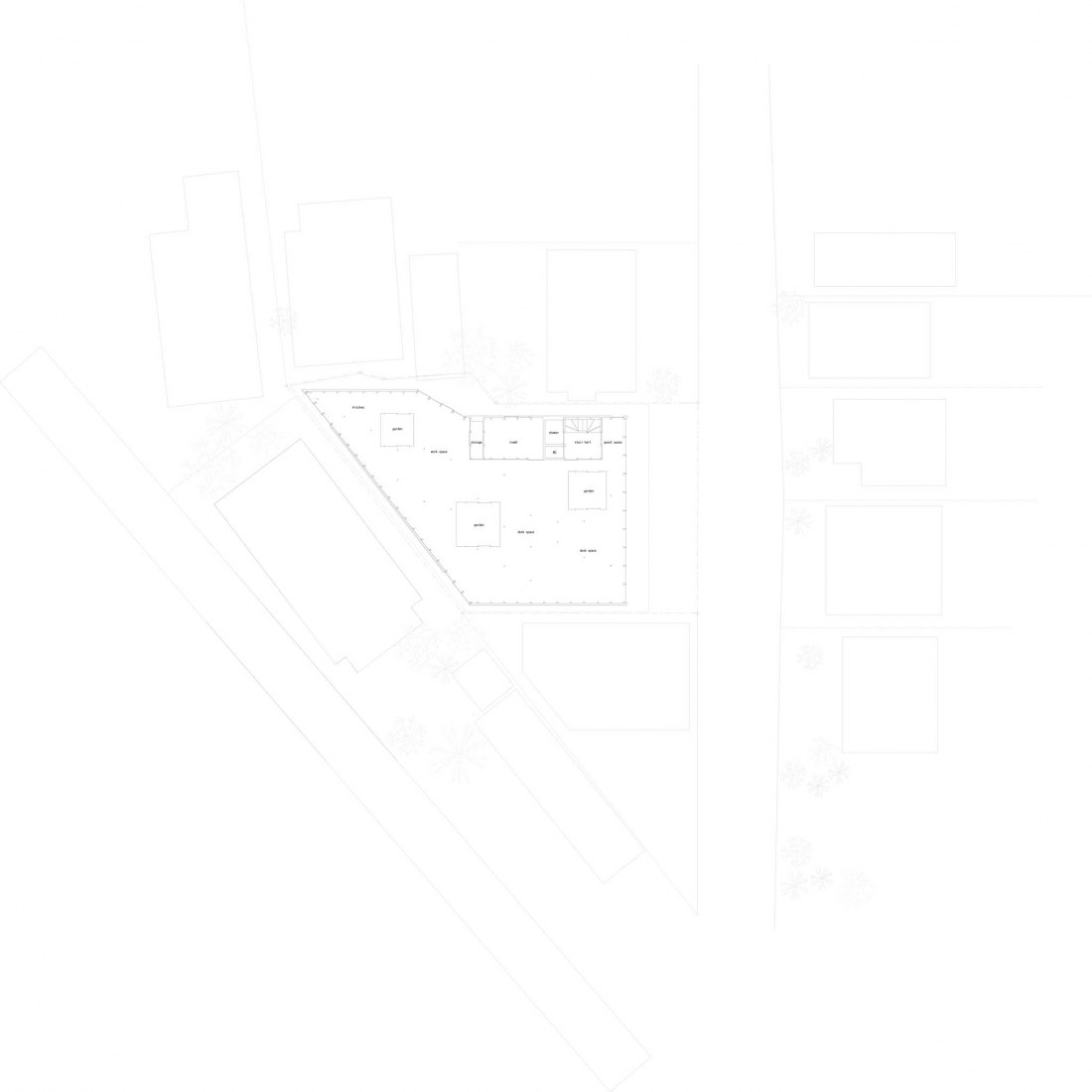That is why when people go up on the deck, the tension of the vertical structure would be reduced, allowing it to support about 150 people. For its calculation the form that exists is finding the Young's Modulus of each one of the woods, since they are natural of trees that each one has resistance and different characteristics. For this reason, the behavior of the wood cannot be accurately deduced, so it was decided to include a large safety factor.
Description of project by Studio Velocity
"Various under-roof spaces created by one curved surface and rooftop space is like wrapped up."
One large curved surface creates a variety of “one room” with different ceiling heights under different places, and a softly wrapped space, like a dish, above it.
It secures an open interior space suitable for dense residential areas and a rooftop space with moderate privacy at the same time.
"How to make a new curved surface/make a curved surface with a flat material."
Generally, how to make a curved surface is: (1) How to make a curved surface with RC, (2) Method of making curved surface with polygonal structure and finishing material. (3) Bending laminated wood/Build H Bending steel to make curved surface.
There was such a thing.
(1) and (3) have the side that the cost is expensive, and (2) requires a lot of time and effort, and the slab becomes thicker.
Therefore, we considered how to make a new curved surface by using a flat material with a very thin and flat cross section and generating a curved surface by gravity and tension.
"Wood tension material like extra-fine columns."
To prevent the interior space from being overly dominated by structural principles, the tension material is cypress rather than wire.
This has created a wooden structure that is not much different from usual, except for the curved very flat beams and the proportions of the pillars that do not seem to support the roof.
"Random vertical material, softly defines the space."
Randomly arranged wooden tension materials softly define the space and are designed in parallel with the arrangement of furniture and the cohesive of the space.
"Changing stress on curved roof and tension material."
The more a person rides on the rooftop, the smaller the tension on the lower vertical pillar, and it is designed so that compression is not applied until a maximum of 150 people (40 kg/m²) is reached. The payload and tension keep the shape of the building while deducting from time to time.
"Precision wood/Designing lamina arrays for luminated timber."
What is the Young's modulus of wood?
The nominal Young's modulus of wood is determined by the average value obtained by destructive inspection of many similar materials, or by a very rough grade test in the factory (classification according to strength).
Even if they have the same trees and nominal Young's modulus, since wood is alive, it has different properties and strengths, and the actual (each unique) wood strength cannot be known without destructive testing.
Therefore, unlike steel and RC, it is not possible to precisely predict the behavior of timber by structural calculation, so the design is made with a large safety factor, and that idea has already been adopted from the laminated timber manufacturing plant.
So, it was thought that if non-destructive strength tests were conducted on all the wood used, precise individual member strengths that were quite similar to steel frames and behaviors consistent with structural calculations could be obtained.
In this plan, 12 "precision wood" were manufactured by designing the arrangement of the lamina based on the individual data obtained by carrying the load test of about 1100 lamina.




















































